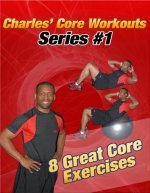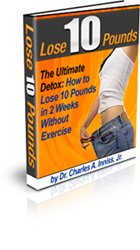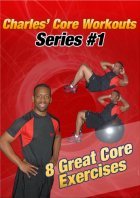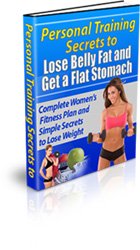14 Core Training & Core Workout Tips and Tools
Core Exercises and Functional Training Overview
Core Exercises, Core Training, and Functional Training are becoming more popular in personal training and fitness circles because they are an effective way to build a strong foundation.
This page has 14 core exercise tips and strategies to get you in great shape. You'll learn about the philosophy of core training, and learn about exercise equipment to work your core muscles.
What is Core Training/ Functional Training?
Click to Watch a Video on the Benefits of Core Training
Functional Training is a term used for training that prepares the body for activities of daily living and athletic activities.
Functional Training emphasizes the "S.A.I.D." Principle. The SAID Principle simply means that your body will have Specific Adaptations to the Imposed Demands that you place on it.
If you want to get better at swimming, you must practice swimming.
If you want to get better at running, you must practice running.
If you want to improve your endurance, you must focus on endurance.
If you want to improve your strength, you must focus on developing strength.
And if you want to develop power and speed, you must exercise in a fashion that best improves speed.
In addition to focusing on your specific functional goal, you must also prepare your body for the demands you will place on it by working on your posture, coordination, balance, and core stability.
Core Training is all about increasing your joint stability and coordination so that you decrease your risk of injury and improve your performance. These principles of movement are universal and important for everyone from occasional exercisers to elite athletes.
14 Core Training & Core Workout Tips and Tools
Core Training & Core Workout Tip #1:
Activate the Abdominals
The abdominal muscles are really important for core stability. EMG (electromyography) tests show that the abdominal muscles fire before the arm muscles or leg muscles during movement. Your body is hard-wired to be stable around the core (lower back and pelvis) before movement in the arms and legs occur.
All of the abdominal muscles are important, but in core exercise programs extra emphasis is placed on the transversus abdominus muscle. The transversus abdominus is the deepest abdominal muscle, and its only role is to stabilize the pelvis and lower back.
The Drawing-In Maneuver for the deep abdominal muscles is an important core exercise to master.
Core Training & Core Workout Tip #2:
Learn to Engage the Pelvic Floor Muscles
The pelvic floor tends to get a lot of attention in Pilates and other core stabilization programs because the pelvic floor works with the deep abdominals and the deep lower back muscles to maintain lower back stability.
Kegel Exercises are the primary tool used to strengthen the pelvic floor muscles.
Core Training & Core Workout Tip #3:
Strengthen the Lower Back Muscles
Sometimes the lower back muscles get neglected in core training programs, but having a strong lower back is vital to overall core strength and injury prevention.
One of the reasons, the lower back gets neglected is vanity. Many people exercise their stomachs religiously hoping that it will improve how their stomach looks. Very rarely will you hear this in the gym, "Man, I wish I could get ripped lower back muscles!"
Because we tend to be sedentary and inactive the lower back gets really weak. Simple lower back exercises are a key component of any core workout routine.
Beyond the Abs and Lower Back
Core Training & Core Workout Tip #4:
Do Balance Exercises
Balance Exercises are another really important component of functional training workout plans. When you run, walk, climb stairs, or play any sport you are likely standing on 1 leg many times.
If you have poor balance and coordination, you will have less control over your joints. And when you have less control over your joints, you are more likely to get injured.
Generally a balance exercise is defined as any exercise on one leg or an exercise standing on an unstable surface.
1 Leg Balance Exercises are great for improving ankle, knee, hip, and core stability.
Core Training & Core Workout Tip #5:
Strengthen your Scapular Muscles and Rotator Cuff
I really like the National Academy of Sports Medicine's approach to Core Training. In addition to developing a stable spine through abdominal and lower back exercises, they include the shoulder girdle and hip girdle as part of the core. In their eyes the core is the entire trunk, not just the lower back.
The scapular muscles and rotator cuff muscles contract before the hand muscles, and poor scapular stability will increase the risk of shoulder injuries and decrease performance. Here is a good upper back exercise that strengthens the scapular muscles and rotator cuff.
Core Training & Core Workout Tip #6:
Strengthen the Hip Girdle
As mentioned in the previous tip, the core includes the shoulder girdle and hip girdle.
An important point in functional training is that the body is a chain and it is only as strong as its weakest link. In addition, because the body is a chain, movement or problems in one area will affect movement in another area.
The hip girdle actually plays a significant role in the position, movement, and health of the knee joint and the ankle joint. A stable hip can decrease the risk of ankle, knee, and hip injuries and dramatically improve sports performance
Bridges are a great exercise to improve hip stability.
How to Work the Core Muscles:
Endurance, Strength, and Power
Core Training & Core Workout Tip #7:
Focus on Endurance and Stabilization First
When you begin a core exercise program it is wise to first develop stabilization and endurance.
Core Stabilization Exercises are core exercises that involve little to no movement through the lumbar spine. The Plank is an example of a core stabilization exercise.
When doing core stability exercises, it is best to aim for higher repetitions (12-25 per set) and slower controlled movements.
Core Training & Core Workout Tip #8:
Focus on Strength After Stabilization
After you have developed a base level of core stabilization, you will be able to more efficiently develop your strength.
Core Strength Exercises focus on developing strength through the entire range of motion through the spine; whereas, stability exercises where done with little to no movement through the spine.
Crunches on an Exercise Ball are a great strength exercise. When doing strength exercises, aim for moderate repetitions (8-15 per set).
Core Training & Core Workout Tip #9:
Focus on Power after Stability and Strength
Stability and Strength are the foundation for developing power, speed, and athletic ability. Once you have developed your foundation, you will be less likely to get injured and perform at a higher level during athletic activities and sports.
Power exercises for the core are dynamic core exercises that generally involve throwing or jumping. The goal of power training is to teach your body to transfer energy from your core to your arms and your legs.
Core Exercise Equipment and Core Exercise Tools
Core Training & Core Workout Tip #10:
Do Reebok Core Board Exercises
The Reebok Core Board is a great tool for core training. It tilts side to side, front to back, and rotates which allows you to work in all three planes of motion.
Here are a few Reebok Core Board Exercises.
Core Training & Core Workout Tip #11:
Get on a Bosu Ball
The Bosu Ball is another popular piece of core exercise equipment.
The Bosu Ball can be used for both balance and standing exercises as well as lower back and ab exercises. Here are some of the best ab exercises on the bosu ball.
Core Training & Core Workout Tip #12:
Get on the Exercise Ball
The Exercise Ball is one of my favorite core exercise tools. Because it is less stable than a bench or the floor, it will challenge your core muscles to maintain your stability.
Here are some abdominal exercises on the ball and lower back exercises on the ball.
Core Training & Core Workout Tip #13:
Add Medicine Ball Exercises to Your Core Workouts
The Medicine ball is a great way to increase strength, functional performance, and speed.
Here are some medicine ball abdominal exercises and some medicine ball core exercises for speed.
Core Training & Core Workout Tip #14:
Add in some Cable Exercises
Cable Exercises are great functional training exercises. The Cables can be used to mimic many functional movements.
Many machines limit you to one path of motion; however, cables allow you to move in multiple directions which allows you to improve your strength in all planes of motion.
Cable lifts, chops and rotations are great core exercises.
2 Bonus Core Training Tips
Turn Arm Exercises into Core Exercises. You can change how you use your arms during upper body exercises to increase how much your core muscles work. For example, alternating your arms on an exercise like the stability ball chest press is a great way to engage your core muscles while working your chest muscles.
Click to read the full article on turning arm exercises into core training exercises.
Turning Leg Exercises into Core Exercises. In addition to modifying arm exercises to increase core work, you can modify leg exercises to increase core work and balance. For example, you can perform squats while standing on a Bosu Ball to increase balance, coordination, and core muscle work.
Click to read the full article on turning leg exercises into core training exercises.
Conclusion
There you go... 14 Core Workout Tips. I hope that gives you some ideas about how to improve your core conditioning program.
For more guidance try my core workout dvd and let me help you get in shape and strengthen your core.
Yours in Health,
Dr. Charles Physical Therapist/ Personal Trainer
Return to the Home Page of the Best Ab Exercises Website
P.S. Check out my Core Workout Video!
The video can be purchased as DVD's and shipped to your home.
Get the DVD for $7.95 + sph
Click Here to Order Your DVD Today!
Click to learn more about the core training.
My Weight Loss and Fitness Program for Women
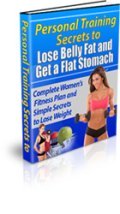
Women's Fitness and Weight Loss Program:
Personal Training Secrets to
Lose Belly Fat and Get a Flat Stomach
If you want to lose weight and get a flat stomach, my ebook
Personal Training Secrets to Lose Belly Fat and Get a Flat Stomach is the answer to your prayers.
It's more than just a list of the best ab exercises.
It's a Complete Women's Fitness Plan with Simple Secrets to Lose Weight and Tone Your Stomach.

